The Seychelles is an archipelago located North of Madagascar, and it mainly consists of small coral islands, atolls, and reefs. The Seychelles is known for its beautiful palm beaches, but it is also home to some of the best and most diverse tropical saltwater fly fishing in the world.
 I’M BEWILDERED and overwhelmed. Dizzy and languid, like a boxer who has just left the ring – humiliated and defeated. The scenes from a full week of hysterically exciting tropical fly fishing flickers before my feverish eyes, while my gazing eyes emptily skirts across the shimmering blue water, which the catamaran transects with surgical precision.
I’M BEWILDERED and overwhelmed. Dizzy and languid, like a boxer who has just left the ring – humiliated and defeated. The scenes from a full week of hysterically exciting tropical fly fishing flickers before my feverish eyes, while my gazing eyes emptily skirts across the shimmering blue water, which the catamaran transects with surgical precision.
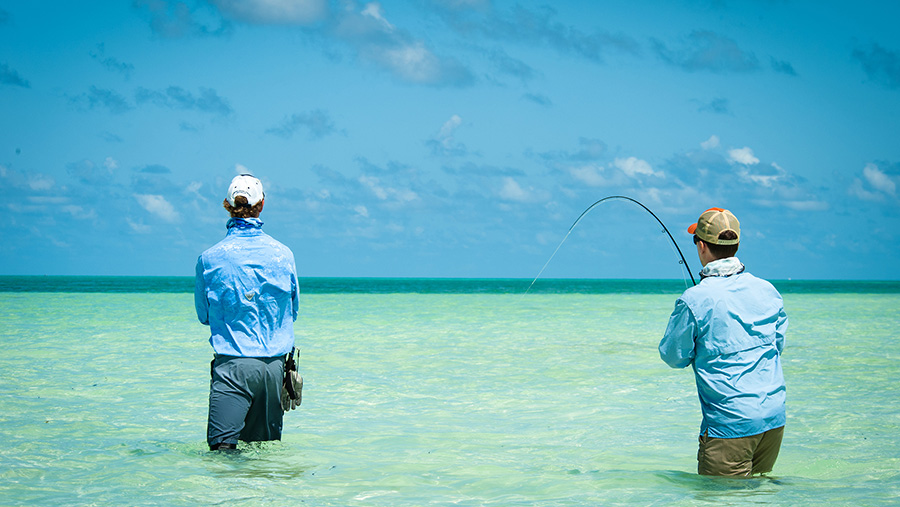 We’re in the middle of the Indian Ocean on our way to our resort on Alphonse Island in the Seychelles. The shiny white flats, the moonscape-like coral formations and the riveting tidal currents, which – in combination with vast elongated, subaqueous meadows of turtle grass and toothy, weather-beaten outer reefs – constitute the heart and soul of the St. Francois Atoll and its hunting grounds, now unobtrusively fade away behind us – like a bittersweet diminuendo that quietly yields to total silence.
We’re in the middle of the Indian Ocean on our way to our resort on Alphonse Island in the Seychelles. The shiny white flats, the moonscape-like coral formations and the riveting tidal currents, which – in combination with vast elongated, subaqueous meadows of turtle grass and toothy, weather-beaten outer reefs – constitute the heart and soul of the St. Francois Atoll and its hunting grounds, now unobtrusively fade away behind us – like a bittersweet diminuendo that quietly yields to total silence.
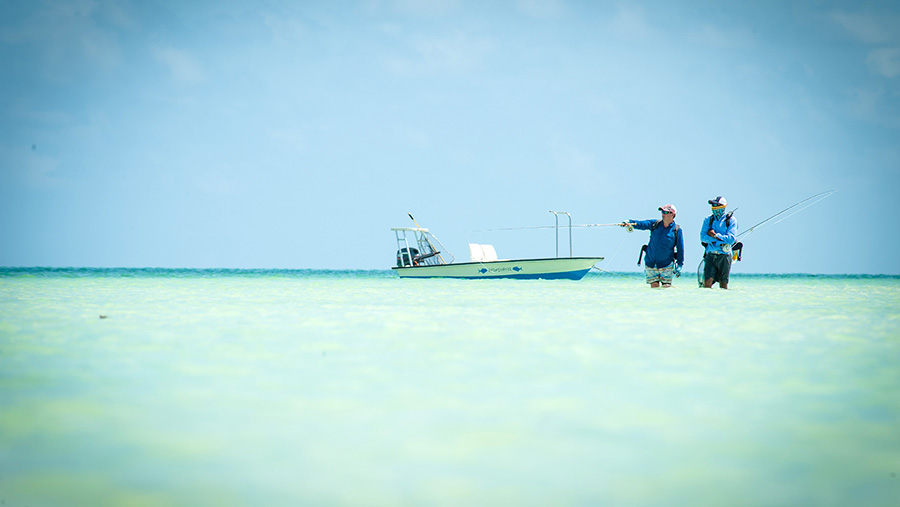 All of it stings relentlessly inside the depths of my soul and, as I cast one last glance behind me and take in the scenery for the last time, I suddenly realize that I’ve never been so sad having to pack up and leave a fishing destination as I am now. It’s a veritable tragedy!
All of it stings relentlessly inside the depths of my soul and, as I cast one last glance behind me and take in the scenery for the last time, I suddenly realize that I’ve never been so sad having to pack up and leave a fishing destination as I am now. It’s a veritable tragedy!
 “ETERNALLY OWNED IS BUT WHAT’S LOST”, sounds a trite, old proverb, which – unfortunately – makes too good sense now that everything is over. In this very moment I feel as if it might as well have been the title of the bizarre Film Noir-like drama that I’ve just been through: An anti-climactic drama – hopeless and dark, where I have had close encounters of the third degree with the full St. Francois Atoll villain cast; bonefish, triggerfish, milkfish, permit and giant trevally, and where – in a morass of nerves, failed technique, and misfortunate circumstances – I’ve lost everything!
“ETERNALLY OWNED IS BUT WHAT’S LOST”, sounds a trite, old proverb, which – unfortunately – makes too good sense now that everything is over. In this very moment I feel as if it might as well have been the title of the bizarre Film Noir-like drama that I’ve just been through: An anti-climactic drama – hopeless and dark, where I have had close encounters of the third degree with the full St. Francois Atoll villain cast; bonefish, triggerfish, milkfish, permit and giant trevally, and where – in a morass of nerves, failed technique, and misfortunate circumstances – I’ve lost everything!
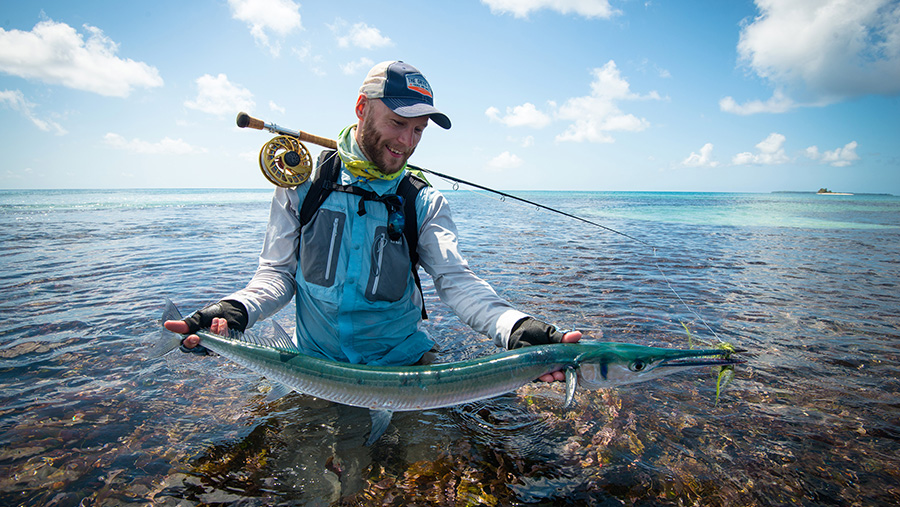 EVERYTHING GETS OFF TO A GOOD START. My faithful fishing buddy, Martin Ejler Olsen, and I begin building our confidence by catching a handful of bonefish on the flickering white sand flats of the St. Francois Atoll – bonefish in combative sizes that seem completely magnetised by our flies, all the while impressing us with their shimmering pearlescent glow, silvery flanks, iridescent blue fin strokes, and phantom-like runs, which make our fly reels hiss like the hoarse winds. Additionally, we catch a yellowlip emperor, a couple of groupers and a lemon shark of about 90lbs. And I get to cast to a giant trevally along the so-called Lollipop Reef – a fish that turns after the fly with inexorable resoluteness, and – heading straight towards me – inhales the fly at such a pace, that I don’t stand a chance of hooking it. The line goes slack, and the fly is spat out before I ever get to establish contact.
EVERYTHING GETS OFF TO A GOOD START. My faithful fishing buddy, Martin Ejler Olsen, and I begin building our confidence by catching a handful of bonefish on the flickering white sand flats of the St. Francois Atoll – bonefish in combative sizes that seem completely magnetised by our flies, all the while impressing us with their shimmering pearlescent glow, silvery flanks, iridescent blue fin strokes, and phantom-like runs, which make our fly reels hiss like the hoarse winds. Additionally, we catch a yellowlip emperor, a couple of groupers and a lemon shark of about 90lbs. And I get to cast to a giant trevally along the so-called Lollipop Reef – a fish that turns after the fly with inexorable resoluteness, and – heading straight towards me – inhales the fly at such a pace, that I don’t stand a chance of hooking it. The line goes slack, and the fly is spat out before I ever get to establish contact.
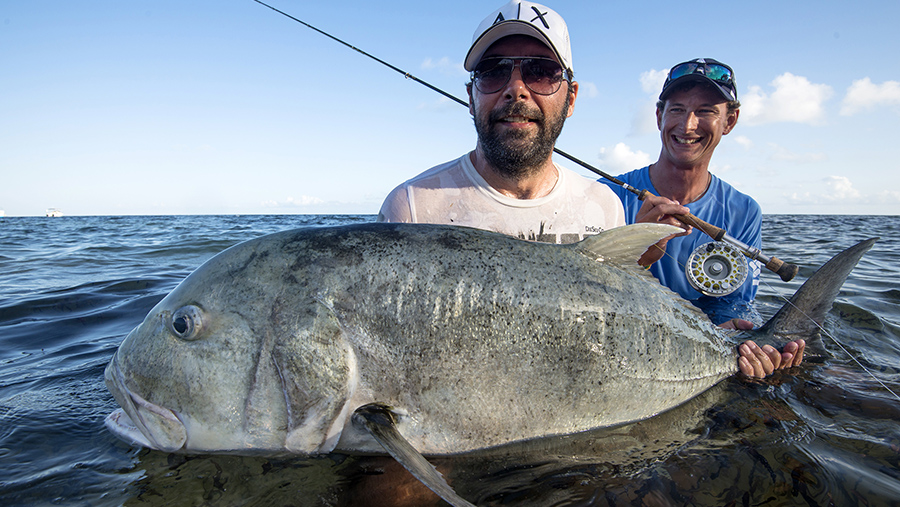 ENCOURAGED BY YESTERDAY’S GREAT FISHING we now spend our second day buoyantly scouting and blind-casting along tidal currents, depth curves and reefs in the hopes of hooking one of the atoll’s terrifying giant trevallies: A powerful and lightning-quick predator species, which – because of its keen eyesight, bloated ego, menacing mannerisms and inflammable temperament – has risen to near-mythical status among saltwater fly fishermen and come to be known as the ‘gangster of the flats’. Unfortunately, on this particular day, they are like flickering, ominous ghosts. They disappear just as abruptly as they emerge – and when we finally manage to get a couple of quality casts in, they display an atypical apathetic indifference with our flies.
ENCOURAGED BY YESTERDAY’S GREAT FISHING we now spend our second day buoyantly scouting and blind-casting along tidal currents, depth curves and reefs in the hopes of hooking one of the atoll’s terrifying giant trevallies: A powerful and lightning-quick predator species, which – because of its keen eyesight, bloated ego, menacing mannerisms and inflammable temperament – has risen to near-mythical status among saltwater fly fishermen and come to be known as the ‘gangster of the flats’. Unfortunately, on this particular day, they are like flickering, ominous ghosts. They disappear just as abruptly as they emerge – and when we finally manage to get a couple of quality casts in, they display an atypical apathetic indifference with our flies.
 AFTER A WHOLE DAY with nothing but a few side-catches in the shape of garfish, grouper and bluefin trevally we revise our plans for the following day. Here, we fish along the western reaches of the St. Francois Atoll where an elongated moonscape-like coral reef constitutes a staunch but scarred barrier against the agitated sea.
AFTER A WHOLE DAY with nothing but a few side-catches in the shape of garfish, grouper and bluefin trevally we revise our plans for the following day. Here, we fish along the western reaches of the St. Francois Atoll where an elongated moonscape-like coral reef constitutes a staunch but scarred barrier against the agitated sea.
The tide is high, and our plan is to sight-fish for some of the atoll’s numerous triggerfish – a rather goofy looking and incredibly aggressive fish that is equipped with toothy jaws designed for breaking down corals and crushing crustaceans and mussels. The fact that it is capable of chewing flies (and flustered fingers) clean through only serves to further testament its reputation as one of the most exciting game fish in the Indo-pacific Ocean.
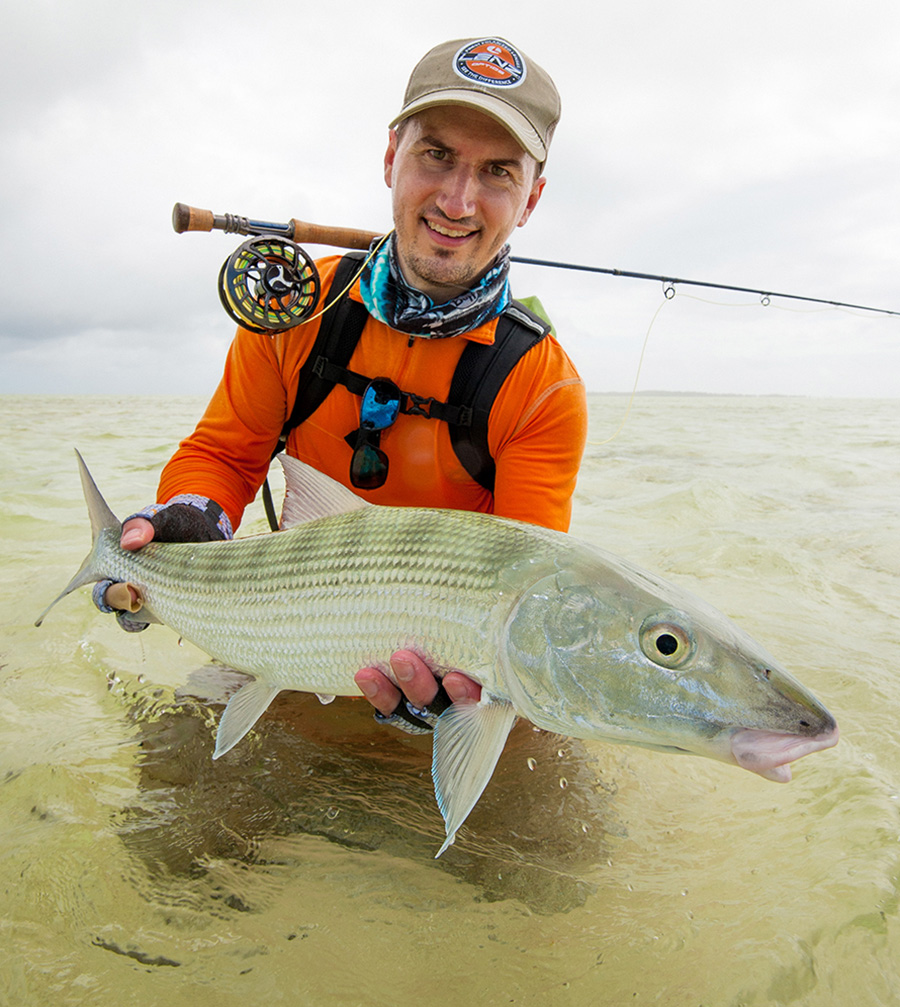 The combat fishing that ensues surpasses all of our expectations. With great assistance from our guide, Brandon, – who jumps headlong on the fish with his landing net as soon as they’re hooked – we manage to land three out of the five uptight triggerfish that gulp down our crab flies.
The combat fishing that ensues surpasses all of our expectations. With great assistance from our guide, Brandon, – who jumps headlong on the fish with his landing net as soon as they’re hooked – we manage to land three out of the five uptight triggerfish that gulp down our crab flies.
In addition to triggerfish, we also catch three yellow lip emperors, a few groupers, several unidentifiable coral fish, and a couple of solid bonefish. With both triggerfish and bonefish on my scorecard today, Brandon suggests that we end off with half-an-hour’s worth of blind-casting with poppers for giant trevally. If all ends well, I could end up with an Indo-Pacific grand slam.
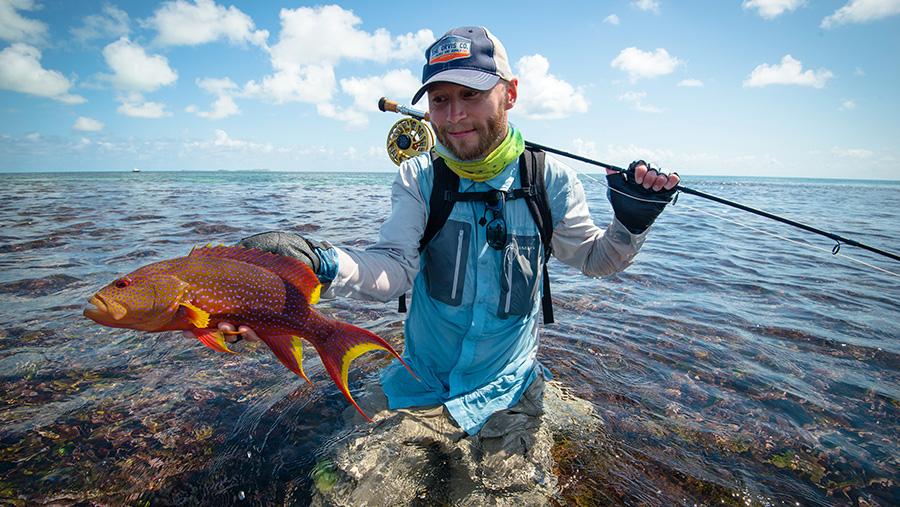 Along a sandy flats bar with a relatively drastic drop off we’re now busy casting and retrieving our noisy NYAP poppers in the hopes of a redeeming strike. There’s plenty of small mullet and other baitfish around, so things look promising. It isn’t me, however, who suddenly experiences the violent burst and tug from a giant trevally. 10 minutes before our guided day session is over, Martin’s popper is brutally torn off the surface and he now feels the weight from a tenacious fish – one that he handles expertly, with full drag power, a low rod angle and maximum pressure.
Along a sandy flats bar with a relatively drastic drop off we’re now busy casting and retrieving our noisy NYAP poppers in the hopes of a redeeming strike. There’s plenty of small mullet and other baitfish around, so things look promising. It isn’t me, however, who suddenly experiences the violent burst and tug from a giant trevally. 10 minutes before our guided day session is over, Martin’s popper is brutally torn off the surface and he now feels the weight from a tenacious fish – one that he handles expertly, with full drag power, a low rod angle and maximum pressure.
After having jubilantly landed the dirty-fighting brute of a giant trevally – and it’s approximately 25lb frame has been photographed and released – I can’t help but mention how it’s a pity that Martin didn’t take time to catch a bonefish earlier in the day. Then it would have been him, who had managed a grand slam. Upon hearing this, Brandon interjects that we still have a couple of minutes on us, and that – although there are no bonefish to be seen anywhere – Martin might as well try blind-casting a bit along the sand bar we’re on, while the boat is prepared for take off.
It seems like there’s no real point, but Martin gives it a shot nonetheless. And when he hooks up on the very first cast and shortly after lands a little bonefish, we can hardly believe our own eyes. A small miracle has just happened!
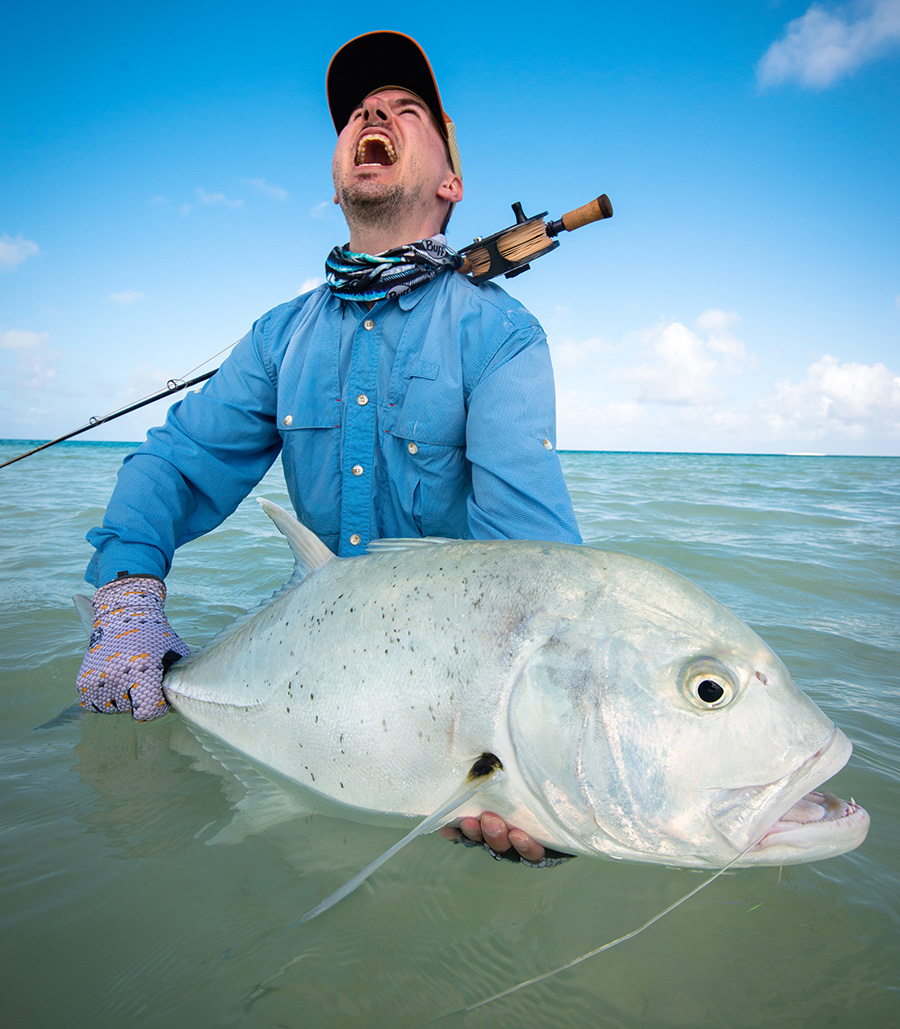 THE FOURTH DAY ARRIVES, and we’ve now gone into GT-mode. We see several of them – but out of casting range, and the blind fishing that we do only results in by-catches in the shape of blue-speckled emperors, garfish, groupers, brassy trevally and bluefin trevally.
THE FOURTH DAY ARRIVES, and we’ve now gone into GT-mode. We see several of them – but out of casting range, and the blind fishing that we do only results in by-catches in the shape of blue-speckled emperors, garfish, groupers, brassy trevally and bluefin trevally.
The next day, where the winds have finally died down enough for us to fish the outer reefs, we continue chasing giant trevally – but once again they’re finicky. We see a couple passing through a tidal channel, but they’re gone before we ever manage to put a cast in.
Later in the day, the tidal water comes gushing in over the outer reefs. We’re busy carefully scouring one of the flat faults when the perfect opportunity suddenly arrives.
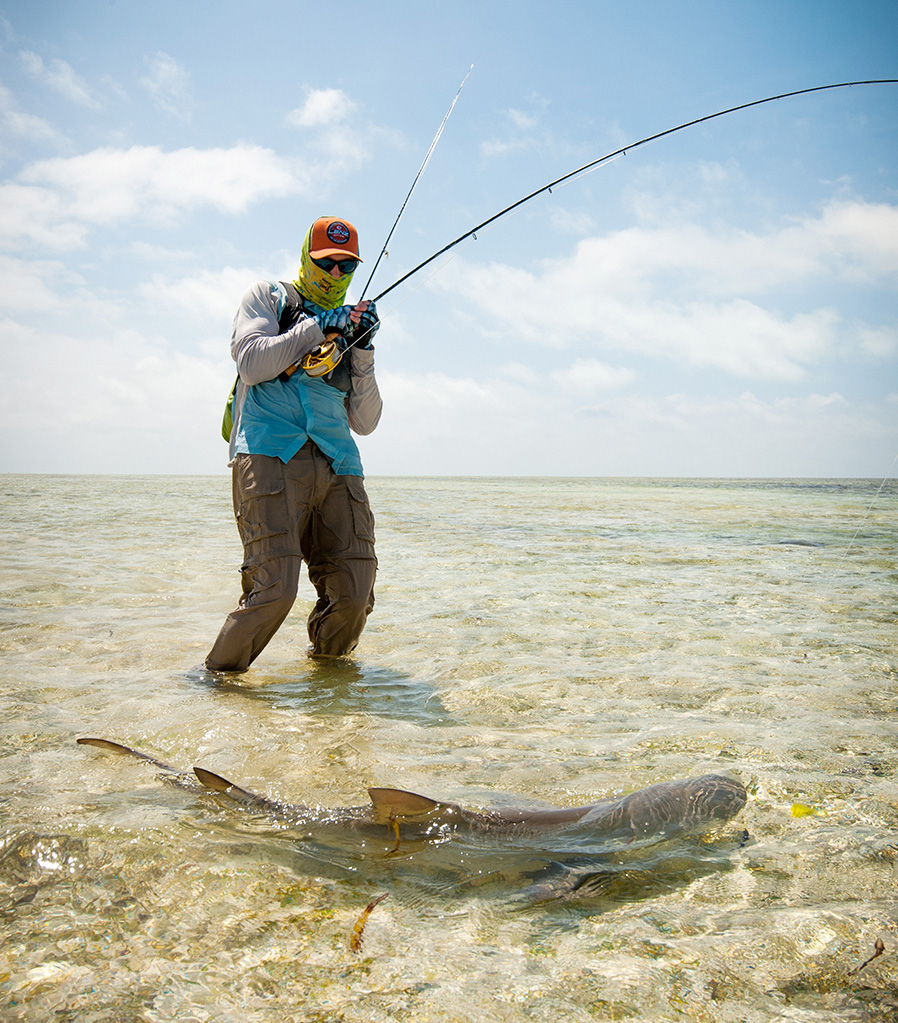 Three charcoal-black giant trevally – of which the fish in front is a true monster – unsuspectingly approach, and this time I manage to place a long cast ahead of them and let the fly sink a little. The suspense is almost unbearable as the fish get closer, and as I start the retrieve and speed up the fly it’s with a galloping heart and feverish hands. One of the two “smaller” fish, which are probably both around 40-45lbs, resolutely chases after the fly in a state of blatant agitation – with flaring fins and flaming eyes, and 10 meters in front of me, it suddenly bursts forward and inhales the fly in an explosion of foam and water.
Three charcoal-black giant trevally – of which the fish in front is a true monster – unsuspectingly approach, and this time I manage to place a long cast ahead of them and let the fly sink a little. The suspense is almost unbearable as the fish get closer, and as I start the retrieve and speed up the fly it’s with a galloping heart and feverish hands. One of the two “smaller” fish, which are probably both around 40-45lbs, resolutely chases after the fly in a state of blatant agitation – with flaring fins and flaming eyes, and 10 meters in front of me, it suddenly bursts forward and inhales the fly in an explosion of foam and water.
 I do as prescribed: I lower the rod tip, pull hard and resolutely on the fly line and start backing up to set the hook, but the fish just opens its bucket-sized mouth and spits the fly. In a state of pure, flustered over-agitation, my nervous hands have lost their grip on the fly line, and all my efforts to hook the fish have been in vain. And before I manage to put in another cast, the fish are gone!
I do as prescribed: I lower the rod tip, pull hard and resolutely on the fly line and start backing up to set the hook, but the fish just opens its bucket-sized mouth and spits the fly. In a state of pure, flustered over-agitation, my nervous hands have lost their grip on the fly line, and all my efforts to hook the fish have been in vain. And before I manage to put in another cast, the fish are gone!
Beyond frustrated, I toss the fly rod scornfully into the water, and after having filled the air with all sorts of inappropriate curses and cuss words, I stand there completely disillusioned on the flat in total silence – with the taste of blood in my mouth, trembling nerves, a hoarse staccato-like breath and a heart that rages blindly behind the skeletal bars of my chest.
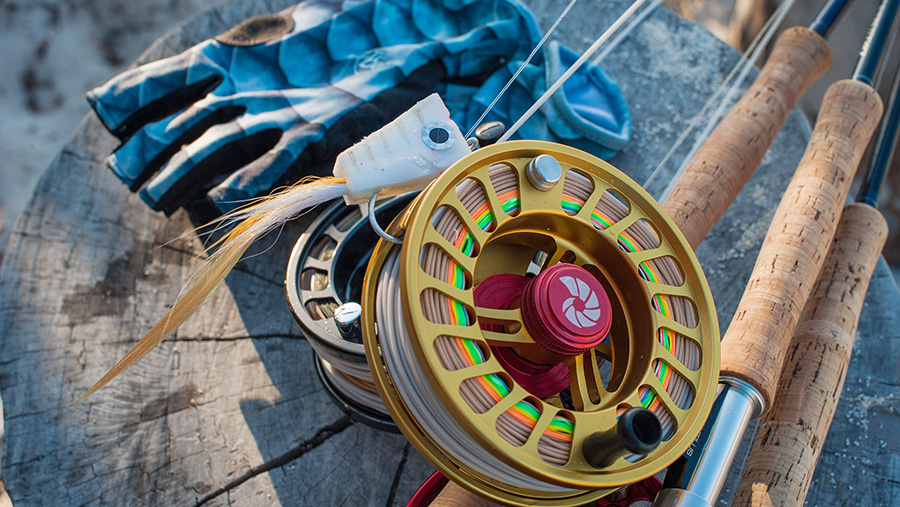 IT’S WITH A SINKING HEART and a minimum of confidence that we begin our last day of fishing. Here, we focus on catching one of the gold bars of the flats – an Indo-pacific permit. These incredibly attractive and challenging fish often forage in the wake of big stingrays, which dig for crustaceans on the sand flats. And during the morning we’re fortunate enough to experience this phenomenon several times. I succeed in hooking one of these shrewd fish twice, and I’m connected with the latter for about 10 minutes before the fly suddenly – and without much cause or occasion – looses its hold. The disappointment is so intense that I feel like fainting.
IT’S WITH A SINKING HEART and a minimum of confidence that we begin our last day of fishing. Here, we focus on catching one of the gold bars of the flats – an Indo-pacific permit. These incredibly attractive and challenging fish often forage in the wake of big stingrays, which dig for crustaceans on the sand flats. And during the morning we’re fortunate enough to experience this phenomenon several times. I succeed in hooking one of these shrewd fish twice, and I’m connected with the latter for about 10 minutes before the fly suddenly – and without much cause or occasion – looses its hold. The disappointment is so intense that I feel like fainting.
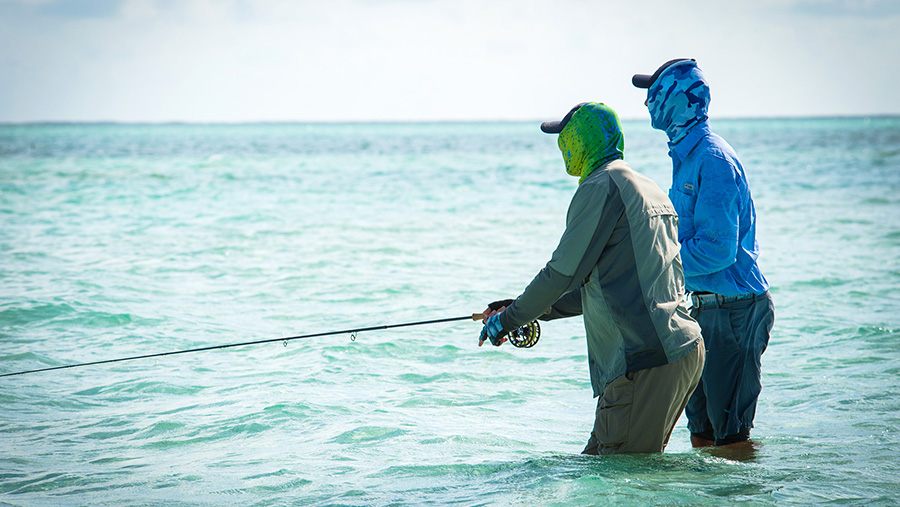 When, later in the day, the tides have gradually dried up- and exposed many of the sandy flats, there is no more permit to be found, so we head for the outer reefs. Even though it’s still early in the season, and the sea is still relatively agitated, we can’t resist the temptation of locating a school of Alphonse Island’s mythical milkfish – a nervous species of fish that look like over-dimensioned mullets and fight harder and longer than any other fish. If we’re lucky, and the conditions are just right, it’s possible to trick these finicky, vegetarian fish into eating a fly.
When, later in the day, the tides have gradually dried up- and exposed many of the sandy flats, there is no more permit to be found, so we head for the outer reefs. Even though it’s still early in the season, and the sea is still relatively agitated, we can’t resist the temptation of locating a school of Alphonse Island’s mythical milkfish – a nervous species of fish that look like over-dimensioned mullets and fight harder and longer than any other fish. If we’re lucky, and the conditions are just right, it’s possible to trick these finicky, vegetarian fish into eating a fly.
On this particular day, we’re fortunate enough to find a big school of milkfish lazily cruising along a tidal seam that runs parallel to St. Francois western coral barrier. Our guide for the day, Wesley, shuts off the engine, jumps to the fore of the skiff with an oar, and gets us closer. Shortly after all hell breaks loose!
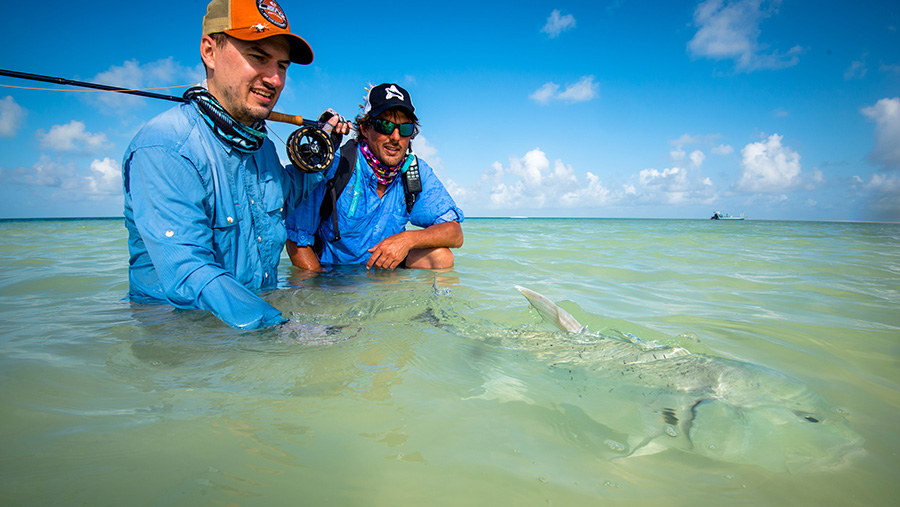 I PLACE A CAST well ahead of the school and keep good contact with the green algae fly as the school passes. Shortly after, I feel a subtle tug on the line, and as I lift the fly rod, the fly line immediately starts gushing through the guides of my 10-weight fly rod. The fly reel now pitches in with a tormented, flanging squeal as the reel spool spins out of control and raw amounts of fluorescent orange backing cuts through the water surface and disappears into the ocean.
I PLACE A CAST well ahead of the school and keep good contact with the green algae fly as the school passes. Shortly after, I feel a subtle tug on the line, and as I lift the fly rod, the fly line immediately starts gushing through the guides of my 10-weight fly rod. The fly reel now pitches in with a tormented, flanging squeal as the reel spool spins out of control and raw amounts of fluorescent orange backing cuts through the water surface and disappears into the ocean.
Out of the corner of my eye – in a completely different direction than the one my backing has charted – I now see a giant, silvery fish in the vicinity of 50lbs thrusting itself meter-high out of the water with the flyline dragging behind. It’s as if it’s suspended mid-air unnaturally long, and it isn’t until it collides with the water again – making a huge crater in a wave through – that I realize that it’s the actual fish I’ve hooked.
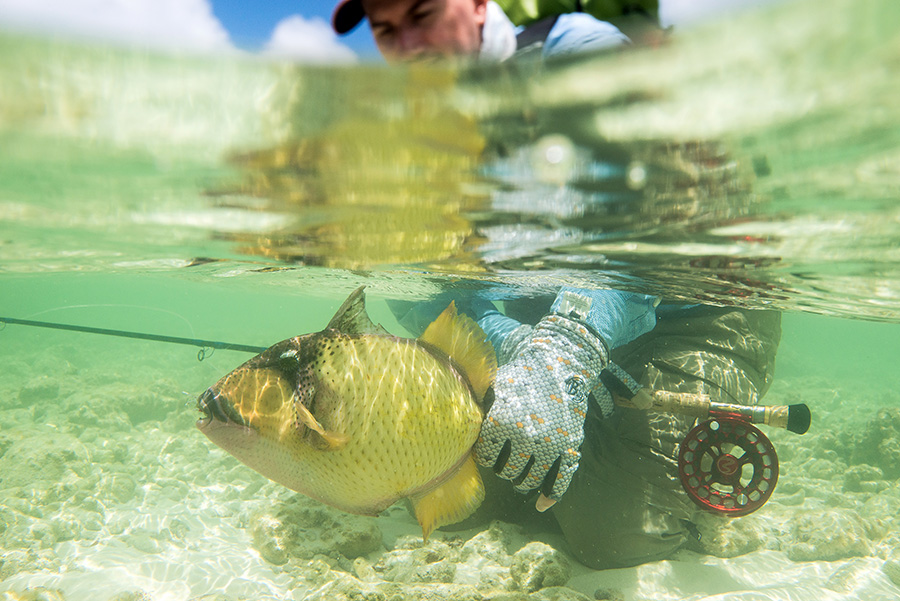 Several meter-high jumps later, and with a backlog of about 150 meters of backing, the pressure on the leader and the small hook become too great. The fly loses its grip in the fish’ soft mouth, and the battle is lost.
Several meter-high jumps later, and with a backlog of about 150 meters of backing, the pressure on the leader and the small hook become too great. The fly loses its grip in the fish’ soft mouth, and the battle is lost.
 This scenario repeats itself an additional three times, and the toughest blow comes when, late in the afternoon, I loose the last milkfish of the day: a fish of a much more manageable size than the previous ones: One that I fight for a long time – long enough to actually start believing that I’ll be able to land it. When I loose this fish, nothing much is capable of consoling me. Not even the guide’s well-meaning statistic offering when he states that only one in 10 hooked milkfish are actually landed. Statistics don’t mean anything to a defeated and broken man!
This scenario repeats itself an additional three times, and the toughest blow comes when, late in the afternoon, I loose the last milkfish of the day: a fish of a much more manageable size than the previous ones: One that I fight for a long time – long enough to actually start believing that I’ll be able to land it. When I loose this fish, nothing much is capable of consoling me. Not even the guide’s well-meaning statistic offering when he states that only one in 10 hooked milkfish are actually landed. Statistics don’t mean anything to a defeated and broken man!
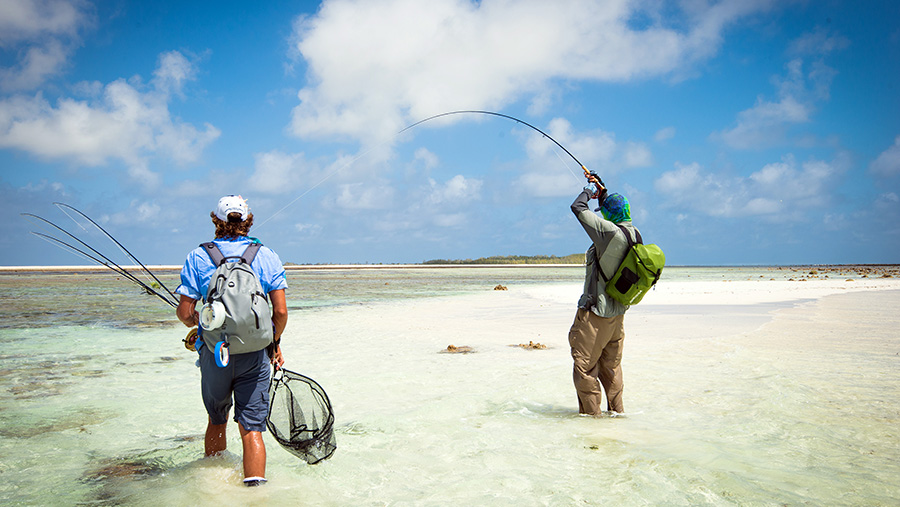 NOW THAT THE DAY IS OVER, the flats skiff is anchored up, and we’re on board the catamaran slowly headed towards Alphonse Island, a burning sense of failure – of having missed out on a unique opportunity – rages relentlessly inside me.
NOW THAT THE DAY IS OVER, the flats skiff is anchored up, and we’re on board the catamaran slowly headed towards Alphonse Island, a burning sense of failure – of having missed out on a unique opportunity – rages relentlessly inside me.
And whilst my fingers minutely work their way across the keyboard as I write these passages – far away from the Seychelles in the cold North – the feeling comes to life again. But now it is diluted by the conciliatory bliss of time and distance – and of a deep-felt gratitude for having experienced such a heartbreakingly beautiful destination and such a unique and breathtakingly exciting fishery.
The challenge no longer consists in mending my wounds but finding a way to plan and finance another trip to Alphonse Island and the St. Francois Atoll (which is why I gotta check out this personal finance guide as soon as possible). I’m yearning to get back there with all my heart and soul, and I’m confident that I will regain what was lost there!
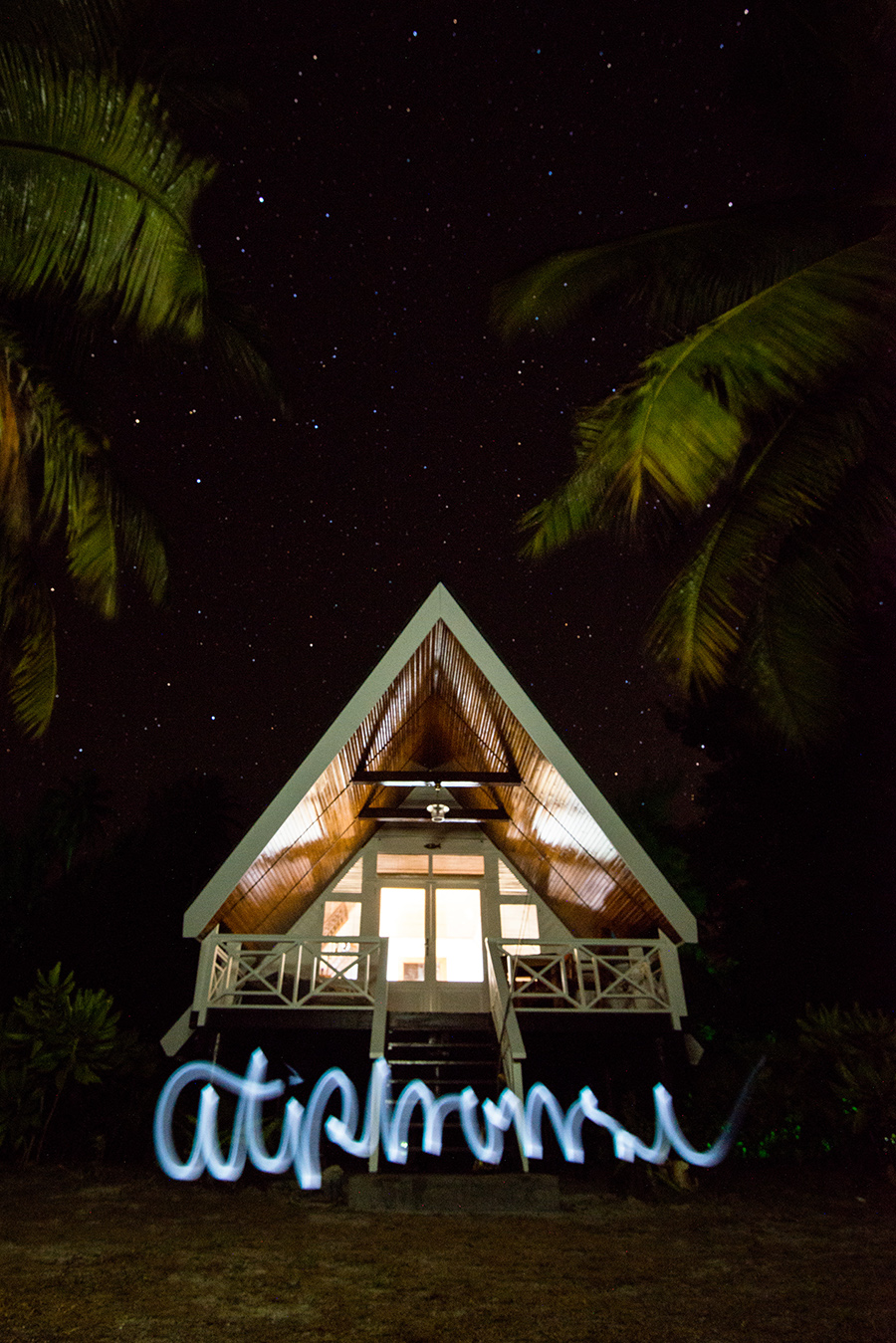 Fact file – Alphonse Island and the Seychelles
Fact file – Alphonse Island and the Seychelles
Alphonse Island is situated in the Indian Ocean some 400 kilometres southwest of Mahé, which is the main island in the Seychelles. The resort caters up to 12 fortunate fly fishing guests – and in addition to being spoiled with service and cuisine in a league of its own, they are treated to some of the world’s best and most diverse tropical fishing.
It is possible to fish on your own along Alphonse Island’s flats with good results, but the guided fishing takes place around the St. Francois Atoll, which offers varied hunting grounds in the form of flats, coral reefs, tidal currents, and drop offs. If you are new to fly fishing, you can check out our recommended fly fishing rod and reel combo for this trip. You’re transported to St. Francois on a catamaran and will subsequently get on board one of the flats skiffs that are anchored up there. Once there, you’ll find massive schools of fully grown bonefish, plenty of Indo-Pacific permit, trigger fish (Yellowmargin, Moustache, and Picasso), milkfish and giant trevally – in addition to snappers, bluefin trevally, brassy trevally, groupers, bonito, parrotfish, nurse sharks and much, much more.
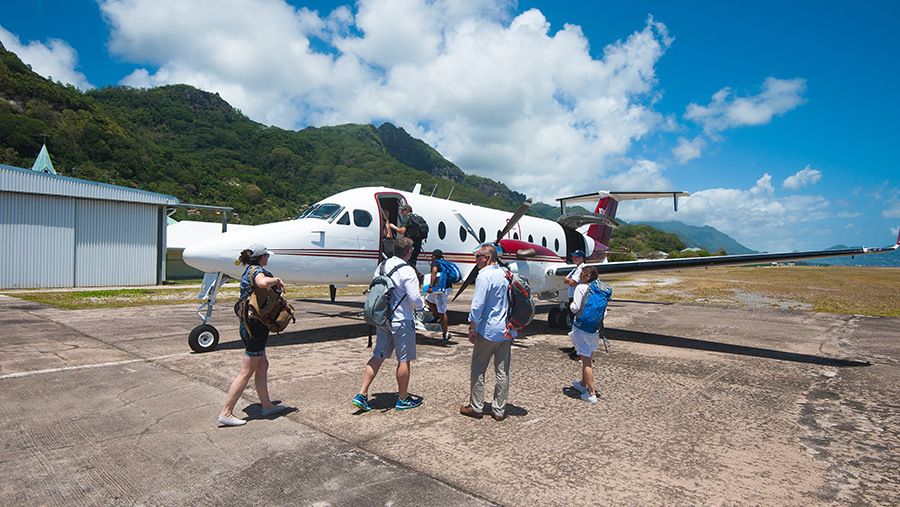 If you’re interested in booking a trip to Alphonse Island, or some of the other renowned Alphonse Fishing Co destinations in the Seychelles – including Cosmoledo and Astove, send an email to: reservations2@alphonsefishingco.com
If you’re interested in booking a trip to Alphonse Island, or some of the other renowned Alphonse Fishing Co destinations in the Seychelles – including Cosmoledo and Astove, send an email to: reservations2@alphonsefishingco.com
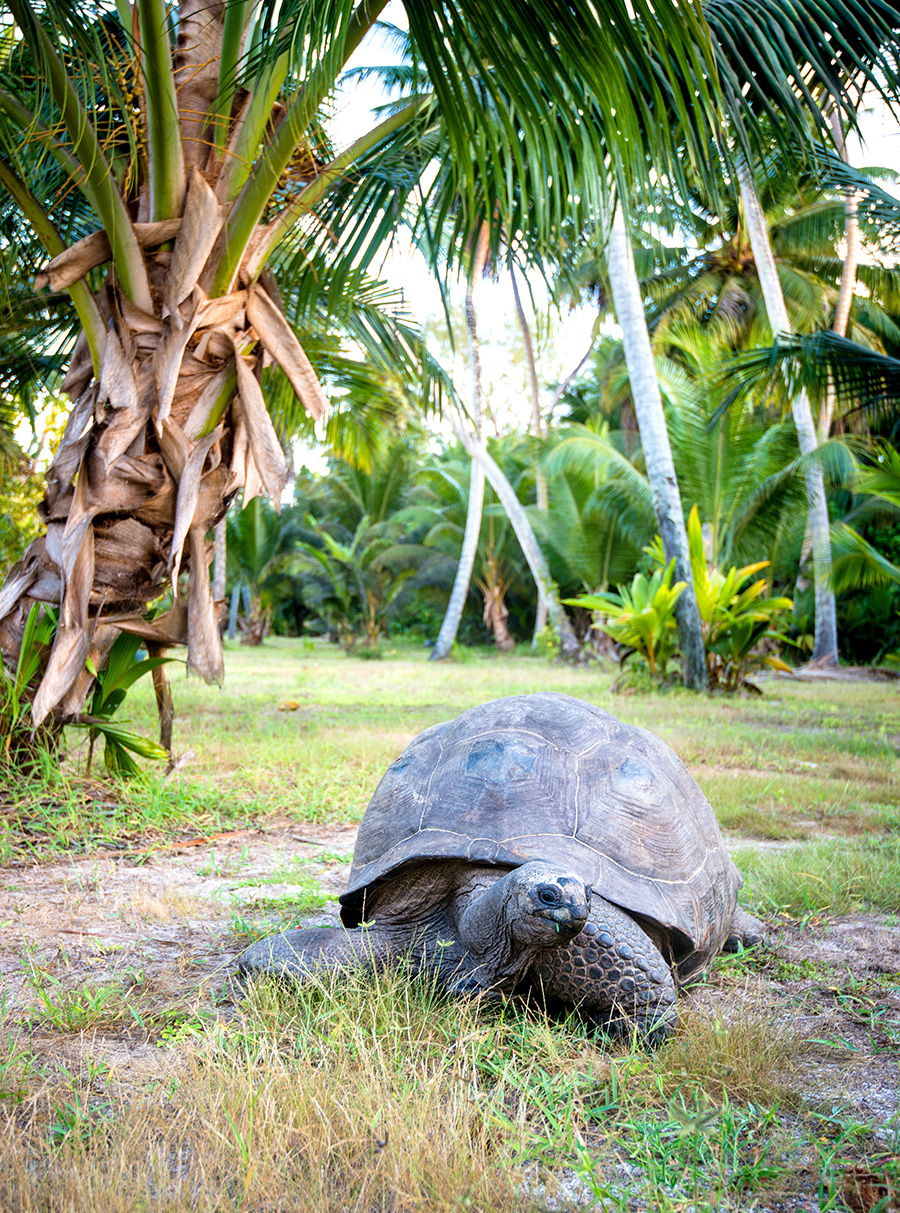 For further information, be sure to check out these links: http://www.alphonsefishingco.com | http://www.seychelles.travel/
For further information, be sure to check out these links: http://www.alphonsefishingco.com | http://www.seychelles.travel/
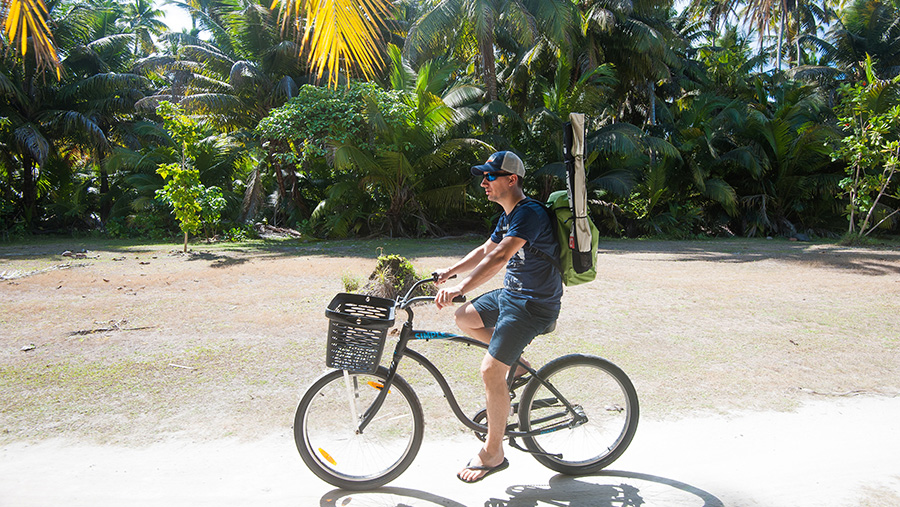 Fact file – Transport and logistics
Fact file – Transport and logistics
The transportation to Alphonse Island is usually via Dubai to Mahé and Seychelles International Airport. Here, Emirates is an obvious choice, seeing as they have regular flights with appropriate arrival times in relation to the journey onwards: http://www.emirates.com/no/English/
Depending on your itinerary, you might experience a good deal of layover in Dubai International Airport, and it might, therefore, be a good idea to get some rest in the Dubai International Airport Hotel, which is conveniently located inside the departure terminal: https://www.dubaiintlhotels.com/
From the airport in Mahé you’ll continue your journey to Alphonse Island on a 1-hour IDC flight arranged by Alphonse Fishing Co. It departs from a hangar outside the International Airport, and getting there involves a five-minute taxi ride. ■
Med venlig hilsen / All the best,
Rasmus Ovesen
Freelance Fly Fishing Journalist and Photographer

